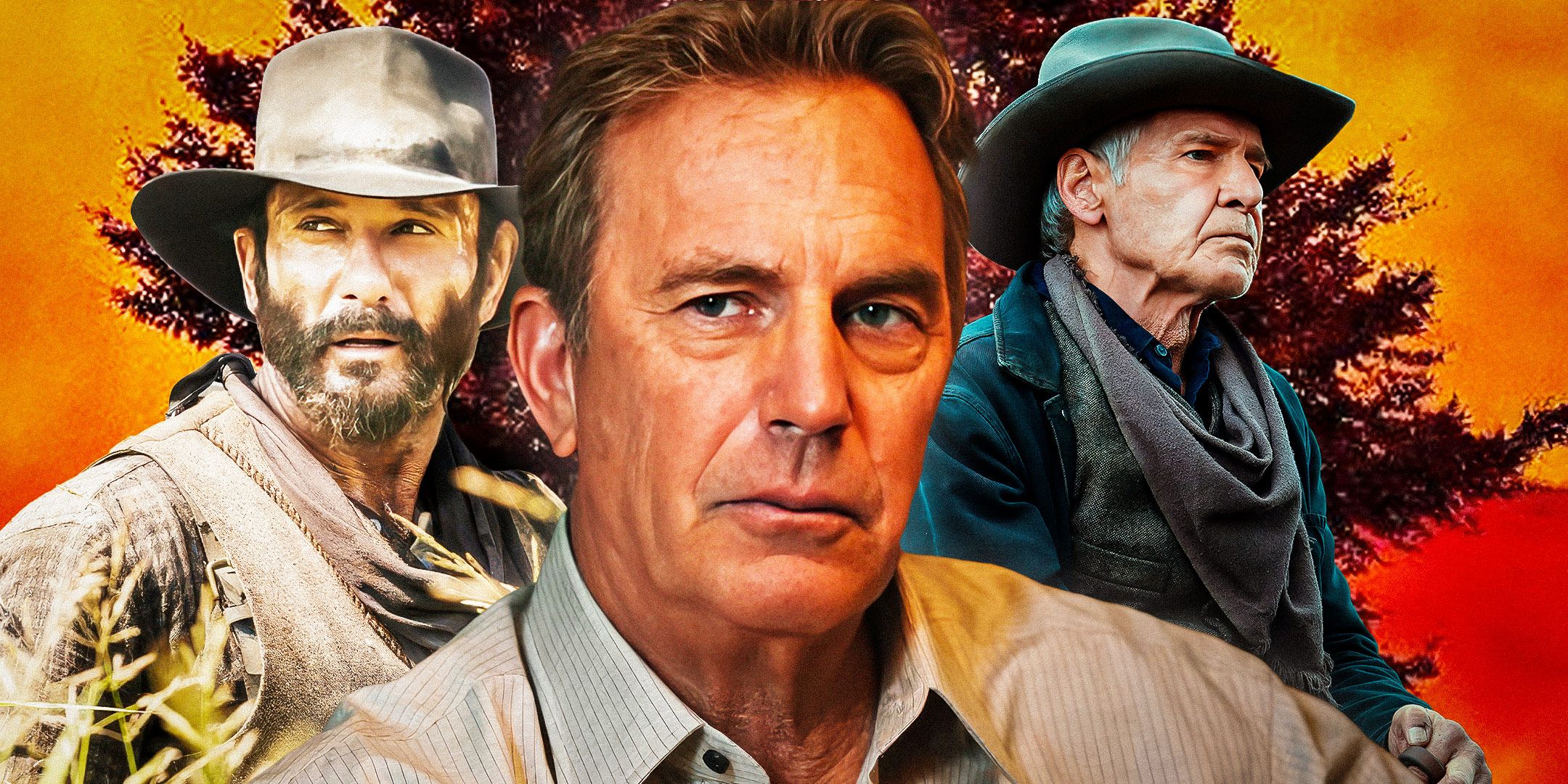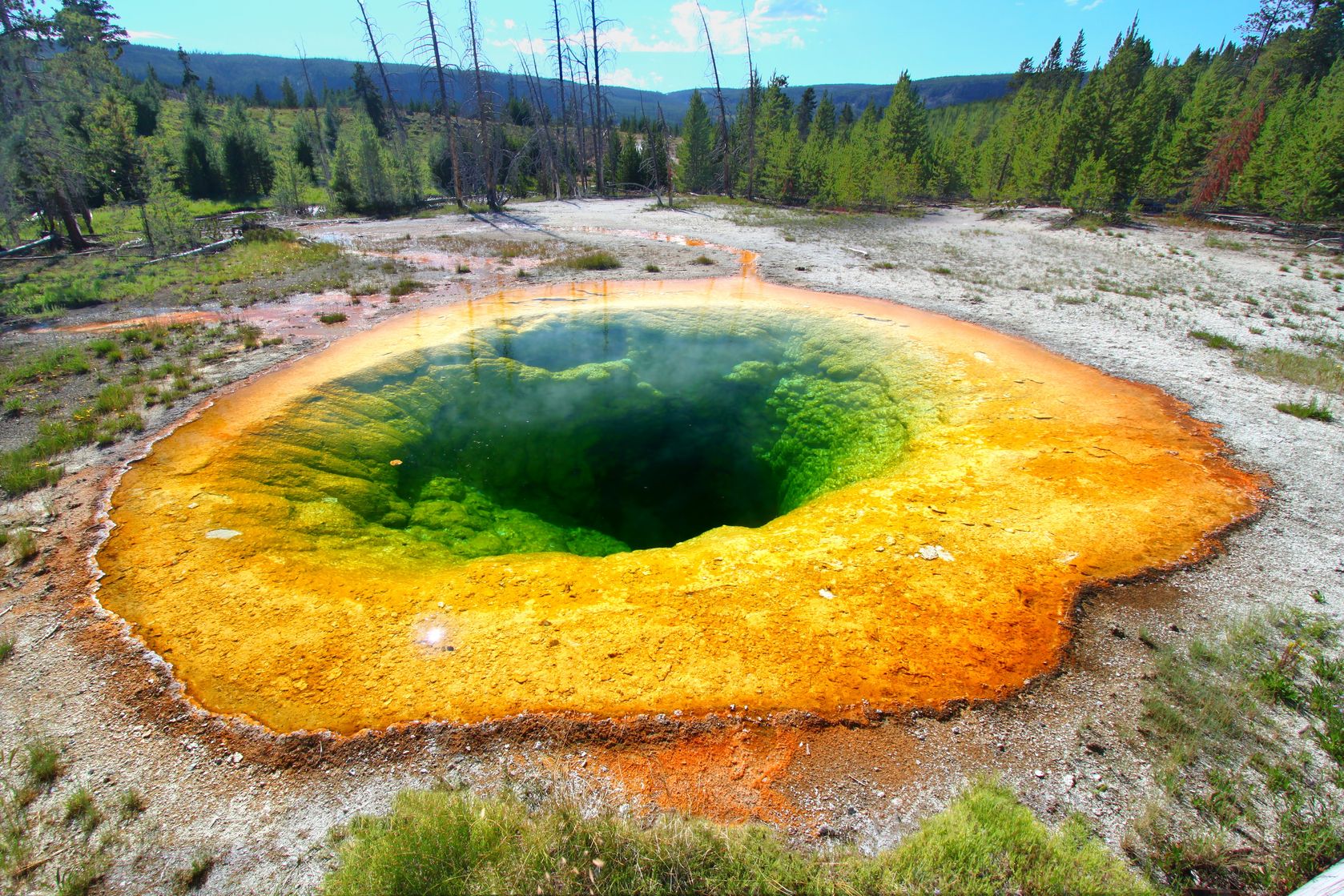What Happened In Yellowstone: The Untold Story You Need To Know
Yellowstone is not just a park; it's a living laboratory of nature's raw power and mystery. Imagine a place where the earth seems alive, where geysers shoot water into the sky, and where the ground feels like it's breathing beneath your feet. But what happened in Yellowstone? It's a question that has intrigued scientists, adventurers, and casual park visitors alike. Let’s dive into the depths of this natural wonder and uncover the secrets hidden beneath its surface.
Yellowstone isn’t just another national park. It’s a hotspot of geological activity, a treasure trove of biodiversity, and a reminder of how fragile yet powerful our planet can be. From the ancient supervolcano lurking beneath the surface to the unique ecosystems thriving above, there’s always something new to discover. Whether you’re a science geek, a nature lover, or just someone who enjoys a good mystery, Yellowstone has a story to tell.
So, buckle up because we’re about to take you on a journey through the history, science, and current events surrounding one of the most fascinating places on Earth. This isn’t just about pretty scenery; it’s about understanding the forces that shape our world and the impact they have on all of us.
- Shows About Candy Montgomery A Deep Dive Into The Fascinating True Crime Sensation
- Best Auntie Annes Pretzel Your Ultimate Guide To The Pretzel Perfection
Daftar Isi
- The History of Yellowstone: A Timeline of Events
- The Geology Beneath Yellowstone: What’s Really Going On?
- Yellowstone Supervolcano: Fact vs. Fiction
- The Wildlife of Yellowstone: A Closer Look
- Recent Events in Yellowstone: What’s Happening Now?
- Climate Change and Yellowstone: The Impact
- Tourism in Yellowstone: A Double-Edged Sword
- Conservation Efforts in Yellowstone: Protecting the Park
- Common Myths About Yellowstone: Separating Fact from Fiction
- The Future of Yellowstone: What Lies Ahead?
The History of Yellowstone: A Timeline of Events
Yellowstone’s history is as rich as its landscapes. Established in 1872, it became the world’s first national park, setting a precedent for conservation efforts globally. But the story of Yellowstone doesn’t start there. Long before it became a national treasure, indigenous tribes like the Shoshone and Crow called this land home. They revered its geothermal features and used its resources wisely.
Fast forward to the late 1800s, and you’ll find explorers and scientists marveling at the park’s unique geysers, hot springs, and wildlife. The Hayden Geological Survey of 1871 played a pivotal role in convincing Congress to protect this area. Since then, Yellowstone has evolved into a symbol of natural preservation and scientific discovery.
Key Historical Milestones
- 1872: Yellowstone National Park is established.
- 1916: The National Park Service is created to manage and protect national parks, including Yellowstone.
- 1988: A massive wildfire sweeps through the park, affecting nearly one-third of its land.
- 2000s: Ongoing research reveals new insights into the park’s geology and ecosystems.
The Geology Beneath Yellowstone: What’s Really Going On?
Let’s talk about the elephant in the room—or rather, the supervolcano beneath Yellowstone. This massive geological feature is responsible for the park’s iconic geysers, hot springs, and mud pots. But what exactly is going on beneath the surface? Scientists believe Yellowstone sits atop a hotspot, a plume of magma rising from deep within the Earth’s mantle.
- West Reading Christmas Tree Farm Your Ultimate Holiday Destination
- Did Fox News Fire Jessica Tarlov Unpacking The Drama Behind The Headlines
This hotspot has caused three major eruptions over the past 2.1 million years, each one shaping the landscape we see today. While the idea of a supervolcano might sound terrifying, it’s important to note that these eruptions are incredibly rare. In fact, most of the activity in Yellowstone is relatively minor, like earthquakes and steam explosions.
Geological Features to Watch For
- Old Faithful: One of the park’s most famous geysers, erupting regularly every 90 minutes or so.
- Mammoth Hot Springs: A stunning display of terraces formed by mineral-rich water.
- Grand Prismatic Spring: The largest hot spring in the United States, known for its vibrant colors.
Yellowstone Supervolcano: Fact vs. Fiction
Now, let’s address the elephant—or should we say, the volcano—in the room. The Yellowstone supervolcano has been the subject of countless documentaries, conspiracy theories, and even Hollywood blockbusters. But how much of it is real? The truth is, while the supervolcano poses a theoretical threat, the likelihood of a catastrophic eruption in our lifetime is extremely low.
Scientists monitor the volcano 24/7 using advanced technology, and so far, there’s no evidence of an impending eruption. That being said, smaller earthquakes and ground deformation are common occurrences, reminding us that Yellowstone is an active geological site. So, while the supervolcano may grab headlines, it’s important to separate fact from fiction.
Myths About the Supervolcano
- Myth: The supervolcano will erupt tomorrow. Fact: Scientists say there’s no immediate danger.
- Myth: An eruption would destroy the entire planet. Fact: While devastating, the effects would be regional, not global.
- Myth: Scientists are hiding information. Fact: All data is publicly available and closely monitored.
The Wildlife of Yellowstone: A Closer Look
Yellowstone isn’t just a geological wonder; it’s also a haven for wildlife. From bison roaming the plains to grizzly bears fishing in the rivers, the park is home to an incredible array of species. But it’s not just about seeing animals; it’s about understanding their role in the ecosystem.
One of the most significant conservation success stories in Yellowstone is the reintroduction of wolves in the 1990s. This decision had a cascading effect on the park’s ecosystem, restoring balance to the food chain and improving the health of the land. Today, Yellowstone serves as a model for wildlife conservation worldwide.
Key Wildlife Species
- Bison: The largest land animal in North America, iconic to Yellowstone.
- Grizzly Bears: Powerful predators that play a crucial role in the ecosystem.
- Wolves: Reintroduced in the 1990s, they’ve transformed the park’s ecology.
Recent Events in Yellowstone: What’s Happening Now?
In recent years, Yellowstone has been in the news for various reasons, from earthquakes to unusual geothermal activity. While these events may seem alarming, they’re often part of the park’s natural processes. For example, in 2023, a series of small earthquakes occurred near the Norris Geyser Basin, prompting increased monitoring by scientists.
Meanwhile, efforts to mitigate human impact on the park continue. New regulations have been introduced to protect sensitive areas, and education programs aim to raise awareness among visitors. As more people flock to Yellowstone, balancing tourism with conservation remains a top priority.
Climate Change and Yellowstone: The Impact
Climate change is affecting Yellowstone in ways both subtle and profound. Rising temperatures have led to earlier snowmelt, altering water availability for plants and animals. Warmer winters have also impacted the park’s iconic wildlife, such as the grizzly bear, which relies on certain foods that are becoming scarcer.
But it’s not all doom and gloom. Scientists and park officials are working tirelessly to adapt to these changes, implementing strategies to protect the park’s biodiversity. From restoring habitats to monitoring species, the fight against climate change is a collaborative effort.
Tourism in Yellowstone: A Double-Edged Sword
Yellowstone attracts millions of visitors each year, and while tourism brings economic benefits, it also poses challenges. Overcrowding, littering, and wildlife disturbances are just a few of the issues park officials face. That’s why sustainable tourism practices are crucial for preserving this natural wonder.
Visitors are encouraged to follow Leave No Trace principles, respect wildlife from a distance, and support local businesses. By doing so, they can help ensure that future generations can enjoy the park’s beauty.
Conservation Efforts in Yellowstone: Protecting the Park
Conservation is at the heart of Yellowstone’s mission. From restoring native species to combating invasive plants, park officials are dedicated to preserving the park’s delicate ecosystems. Collaborative efforts with neighboring states and tribes also play a vital role in this mission.
Technology is another key player in conservation. Drones, satellite imagery, and GPS tracking are just a few tools used to monitor the park’s health. These advancements allow scientists to gather data more efficiently and make informed decisions about resource management.
Common Myths About Yellowstone: Separating Fact from Fiction
Yellowstone is surrounded by myths and misconceptions, from the supervolcano to its wildlife. Here are a few common ones debunked:
- Myth: Yellowstone’s geysers erupt every hour. Fact: Geysers like Old Faithful have irregular eruption patterns.
- Myth: You can swim in the hot springs. Fact: The water is boiling hot and extremely dangerous.
- Myth: Wildlife in Yellowstone is tame. Fact: Animals are wild and should be treated with caution.
The Future of Yellowstone: What Lies Ahead?
Looking to the future, Yellowstone faces both opportunities and challenges. Climate change, increasing tourism, and ongoing geological activity will shape the park’s trajectory. However, with continued research, conservation efforts, and public support, there’s hope for a bright future.
Imagine a world where Yellowstone thrives as a model of sustainable tourism, where its ecosystems remain healthy and resilient. It’s a vision worth striving for, and one that requires the collective effort of scientists, policymakers, and everyday citizens.
How You Can Help
- Visit responsibly by following park rules and guidelines.
- Support conservation organizations working to protect Yellowstone.
- Spread awareness about the importance of preserving natural wonders.
Kesimpulan
What happened in Yellowstone? The answer is both simple and complex. It’s a story of geological wonder, ecological balance, and human stewardship. From its ancient past to its uncertain future, Yellowstone continues to captivate and inspire those who visit it.
As we’ve explored in this article, understanding Yellowstone means looking beyond the surface. It means appreciating its geology, respecting its wildlife, and recognizing the challenges it faces. By doing so, we can ensure that this national treasure remains a source of wonder for generations to come.
So, what’s next? Share this article with your friends, leave a comment below, or explore more about Yellowstone on our website. Together, we can make a difference!



Detail Author:
- Name : Jeffrey Schulist I
- Username : bonita32
- Email : maggio.madie@yahoo.com
- Birthdate : 1979-01-25
- Address : 43001 Haley Stream Lake Raeburgh, NH 35243-3843
- Phone : 989-687-8139
- Company : Ryan and Sons
- Job : Furniture Finisher
- Bio : Necessitatibus iusto nesciunt vel aut at. Ut qui eum sint consequatur in minus tempore. Nihil aliquam quisquam molestiae dolores voluptas non. Ut ut est veritatis voluptas suscipit doloribus beatae.
Socials
linkedin:
- url : https://linkedin.com/in/domenick_id
- username : domenick_id
- bio : Rerum dicta eum eligendi voluptas eveniet vel.
- followers : 6652
- following : 2540
instagram:
- url : https://instagram.com/dlittel
- username : dlittel
- bio : Eligendi quia consequatur et sunt. Corrupti illum soluta maxime quod.
- followers : 2711
- following : 152
facebook:
- url : https://facebook.com/domenick.littel
- username : domenick.littel
- bio : Et minus similique dolorem quidem corrupti placeat tempore.
- followers : 2417
- following : 760
twitter:
- url : https://twitter.com/domenick3073
- username : domenick3073
- bio : Alias debitis quia autem ut aut. Vel animi in voluptatem ipsam ut illo nostrum. Odit sed aut recusandae.
- followers : 550
- following : 2324